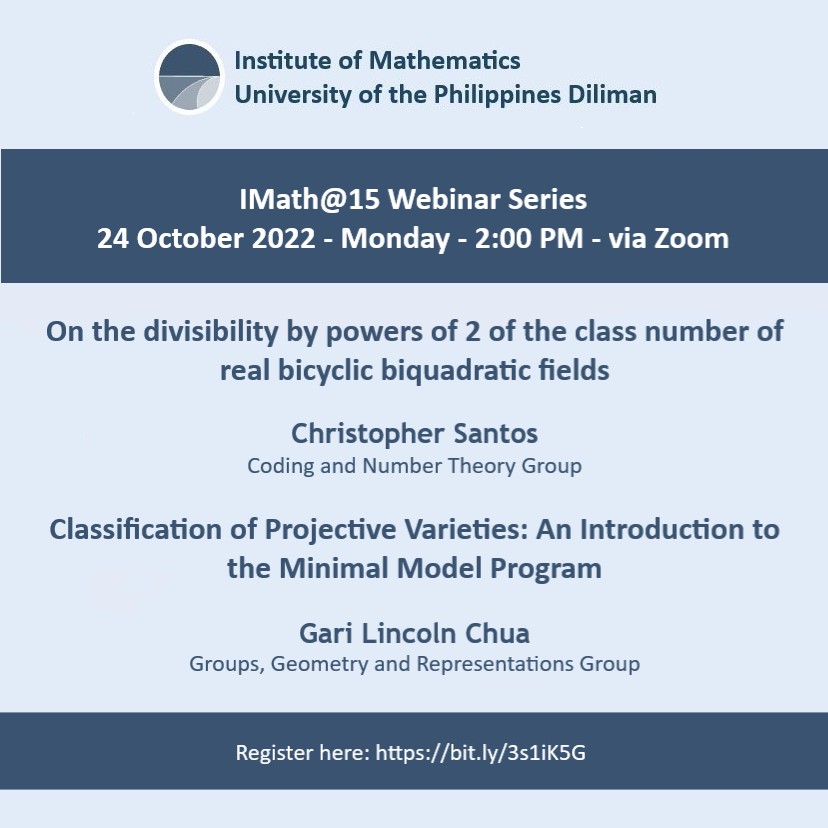IMath Webinar Series: Christopher Santos and Gari Lincoln Chua
19 October 2022
You’re all invited to attend the 2nd installment of this semester’s IMath Webinar Series on Monday, October 24, 2022 at 2:00 PM. Mr. Christopher Santos (of the Coding and Number Theory Group) and Mr. Gari Lincoln Chua (of the Groups, Geometry and Representations Group) will be our speakers.
Christopher Santos (Coding and Number Theory Group)
Title: On the divisibility by powers of 2 of the class number of real bicyclic biquadratic fields
Abstract: Let be an algebraic number field and be its ring of integers. Two nonzero ideals and of are equivalent if there exists nonzero integers and of such that . The number of equivalence classes is known to be finite and is called the class number of . In this talk, we use Herglotz’s equation and known results for the narrow class number of quadratic fields to be divisible by 4 and 8 to give sufficient and necessary conditions for the class number of , where is an odd prime, to be divisible by 2 and 4. In the process, we verify the result of Kucera but by using a much simpler approach.
Gari Lincoln Chua (Groups, Geometry and Representations Group)
Title: Classification of Projective Varieties: An Introduction to the Minimal Model Program
Abstract: A projective variety over a field is the zero locus in the projective space of a finite set of homogeneous polynomials in variables. Two projective varieties and are said to be birationally equivalent if there exists open subsets and such that . The classification of projective varieties up to birational equivalence class is one of the main problems of algebraic geometry. The Minimal Model Program (MMP) aims to construct a minimal model, a “nice” representative of each birational equivalence class. In this talk, we motivate the rich mathematics involved in the MMP by investigating the classification of curves and surfaces. Next, we examine certain properties of minimal models. Finally, we survey some recent results regarding the MMP and its analogues in positive and mixed characteristic.

